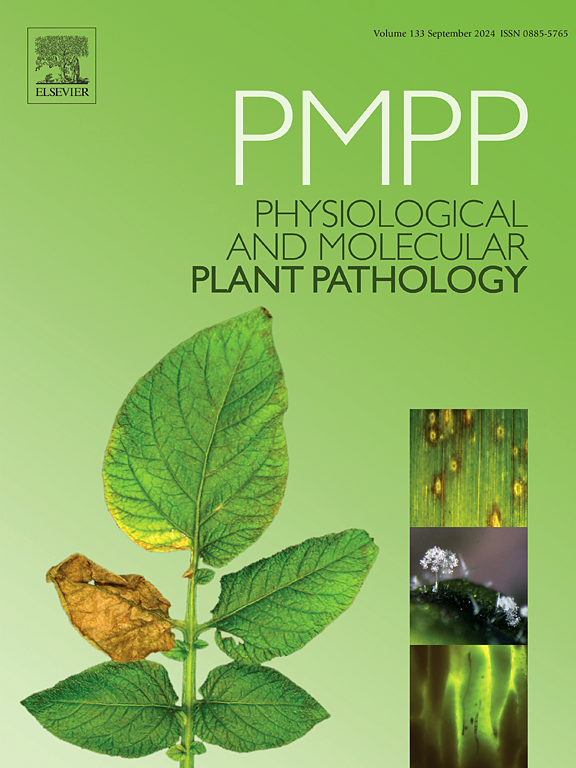Chitinases: Key players in plant defense mechanisms against fungal pathogens
IF 2.8
3区 农林科学
Q2 PLANT SCIENCES
引用次数: 0
Abstract
Throughout history, plant diseases have posed significant challenges to agricultural progress, driven by both abiotic and biotic factors. Abiotic factors include wind, salt damage, freezing, girdling roots and compacted soil, while biotic factors encompass bacteria, nematodes, fungi and viruses. Plants have evolved diverse defense strategies to counter pathogen attacks, one of which involves chitinases, a subset of pathogenesis-related proteins. Chitinases are hydrolytic enzymes that degrade chitin, a high-molecular-weight linear polymer of N-acetyl-D-glucosamine, which is a crucial component of fungal cell walls and septa. These enzymes are produced by a wide range of organisms, including plants, animals, insects, fungi and microorganisms. In plants, chitinases are strongly expressed under pathogenic stress, primarily targeting fungal pathogens by breaking down their cell walls. They also contribute to cell wall remodeling and degradation during growth and defense processes. Numerous studies have demonstrated that the antifungal activity of chitinases is influenced by the chitin concentration and surface microstructure of different fungal species. Research has highlighted their role in protecting plants like mango, cucumber, rye, tomato, grapevine and other plants from various fungal diseases. These findings underscore the critical role of chitinases in plant defense mechanisms, showcasing their importance in mitigating fungal infections and supporting plant health.
求助全文
约1分钟内获得全文
求助全文
来源期刊
CiteScore
4.30
自引率
7.40%
发文量
130
审稿时长
38 days
期刊介绍:
Physiological and Molecular Plant Pathology provides an International forum for original research papers, reviews, and commentaries on all aspects of the molecular biology, biochemistry, physiology, histology and cytology, genetics and evolution of plant-microbe interactions.
Papers on all kinds of infective pathogen, including viruses, prokaryotes, fungi, and nematodes, as well as mutualistic organisms such as Rhizobium and mycorrhyzal fungi, are acceptable as long as they have a bearing on the interaction between pathogen and plant.

 求助内容:
求助内容: 应助结果提醒方式:
应助结果提醒方式:


